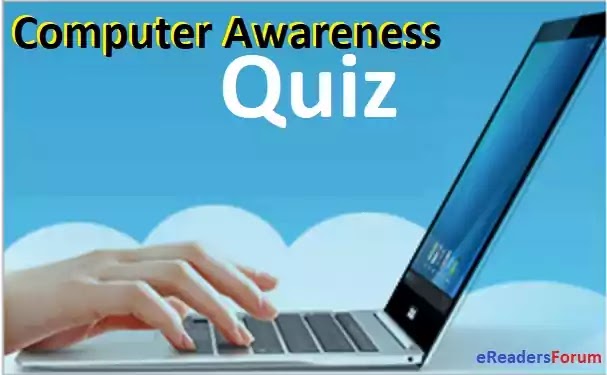Computer Awareness Quiz -1
Computer Awareness Quiz -1

1. Who built the 1st mechanical calculator
a) John Mauchly
b) Blaise Pascal
c) Joseph Marie Jacquard
d) Howard Aiken
2. Punched cards were firstly introduced by
a) Powers
b) Pascal
c) Jacquard
d) Hollerith
3. The first machine which would be called the prototype of the modern computer was
a) Automatic loom
b) Difference engine
c) Analytic engine
d) Slide rule
4. Computers built before the 1st generation of computers were
a) electricals
b) electro-mechanical
c) mechanical
d) none of the above
5. First-generation computers used
a) transistors
b) vacuum tubes
c) wires
d) integrated circuits
6. VLSI was first used with the computers of
a) third generation
b) fourth generation
c) second generation
d) none of the above
7. 2nd generation computers started appearing in
a) 1960
b) 1955
c) 1950
d) 1970
8. Word size of a home computer is
a) 64 bits
b) 32 bits
c) 8 bits
d) 16 bits
9. Size of the primary memory of a Personal Computer ranges between
a) 8 KB and 64 KB
b) 64 KB and 256 KB
c) 256 KB and 640 KB
d) none of the above
10. CPU speed of a personal computer (PC) is
a) 32-kilo instruction per second
b) one million instructions per second
c) 100-kilo instruction per second
d) none of the above
11. VAX-11 from DEC is a
a) mini-computer
b) super mini-computer
c) mainframe computer
d) None Of the above
12. At present, a supercomputer has the computing capability of
a) 4,00OPCs
b) 40,OOOPCs
c) 4. million PCs
d) none of the above
13. Cursor is a
a) thin blinking line
b) pointing device
c) pixel
d) none of the above
14. The backspace key is a
a) control key
b) function key
c) character key
d) none of the above
15. In a high-resolution mode, the number of dots in a line is
a) 320
b) 760
c) 640
d) 900
16. Programs stored in ROM are called
a) hardware
b) firmware
c) software
d) none of the above
17. The unit “kilo instruction per second” is used to measure the speed of
a) processor
b) printer
c) tape drive
d) disk drive
18. A binary system has
a) two symbols (a) and (b)
b) two symbols 0 and 1
c) at least two symbols
d) none of the above
19. The nine’s complement of a decimal number is obtained by
a) adding each digit of the number to 9
b) multiplying the given number by 9
c) subtracting each digit of the number from 9
d) dividing the given number by 9
20. A compiler
a) translates a high-level language into machine language
b) is a part of a software
c) is a computer program
d) none of the above
21. Computer software includes
a) application programs
b) operating system programs
c) packaged programs
d) all the above
22. Machine language
a) differs from one type of computer to another
b) is the language in which programs were first written
c)is the only language understood by the computer
d) all the above
23. 1K is equivalent to
a) 26
b) 28
c) 210
d) none of the above
24. Binary Coded Decimal numbers express-each decimal digit as
a) bits
b) bytes
c) word
d) none of the above
25. The basic operations performed by a computer is
a) storage and retrieval operations
b) arithmetic operations
c) logical operations
